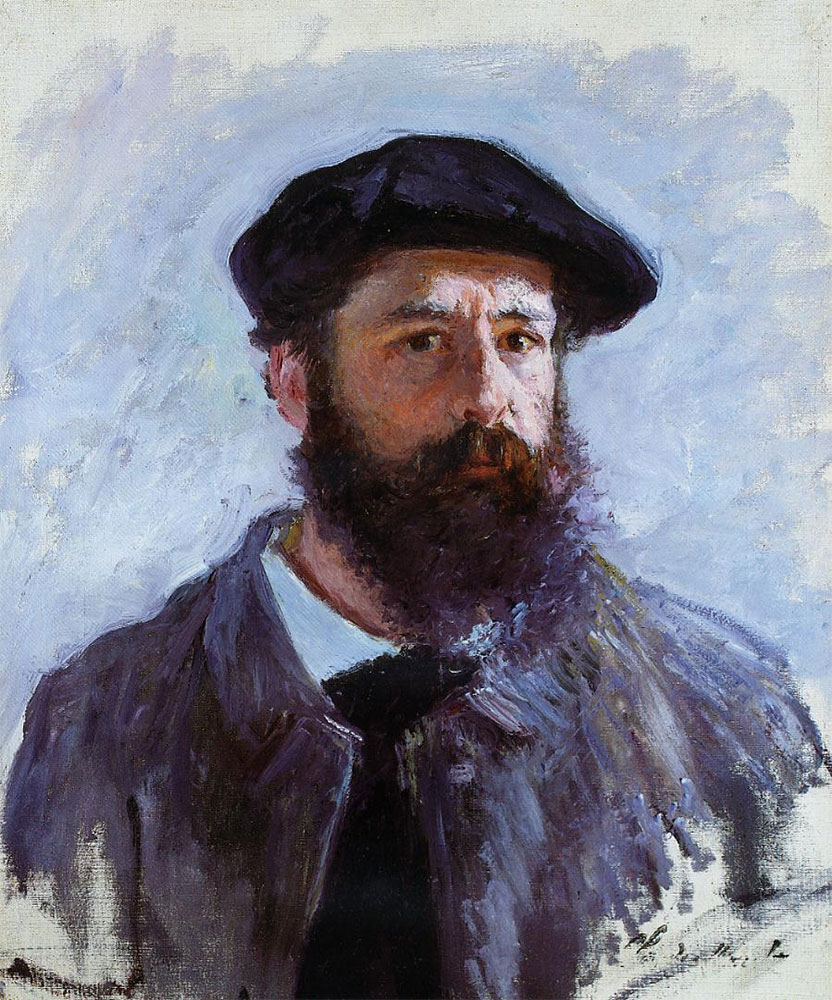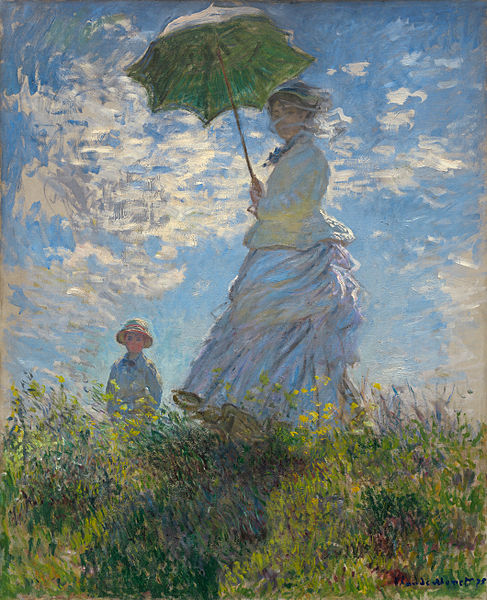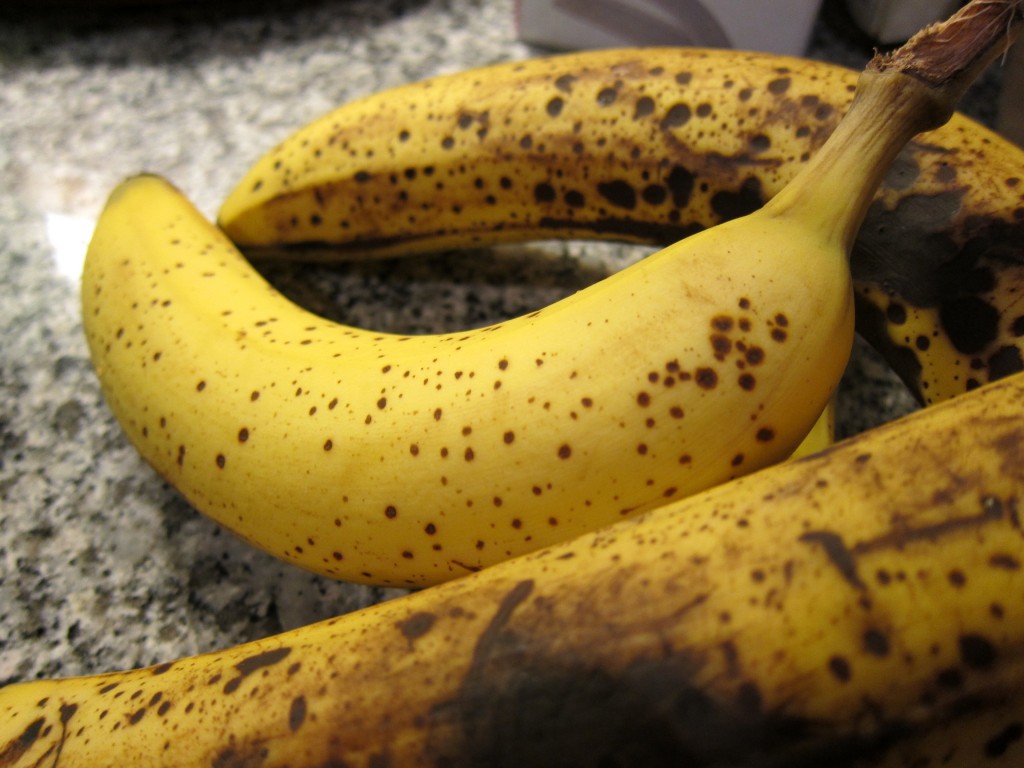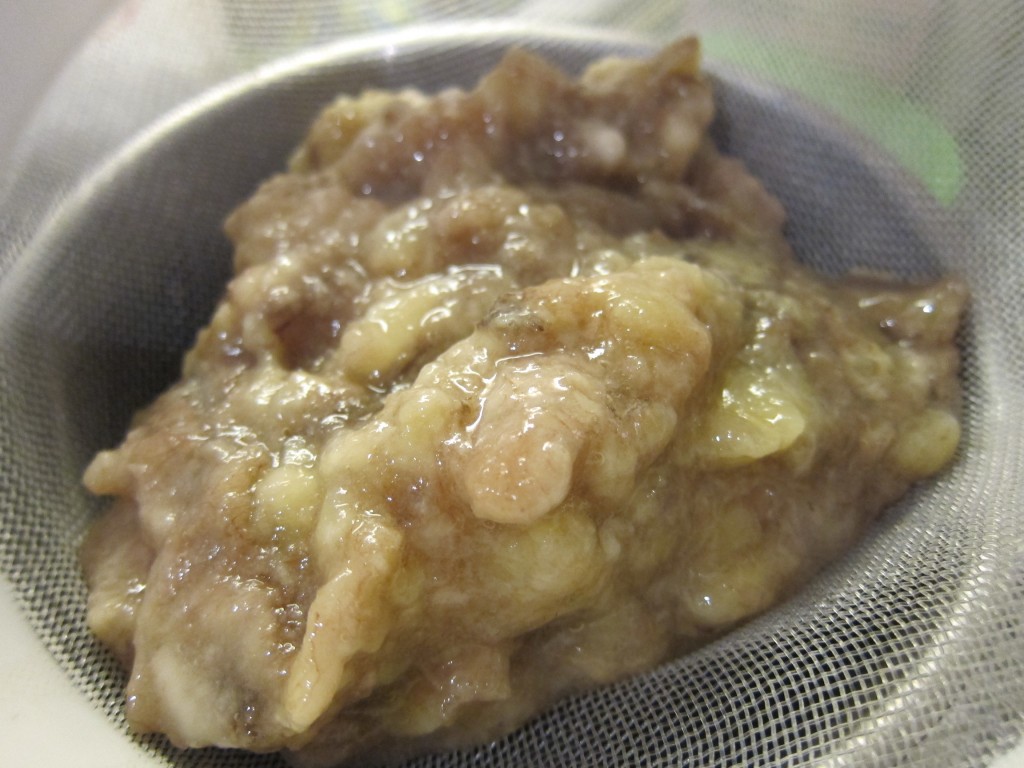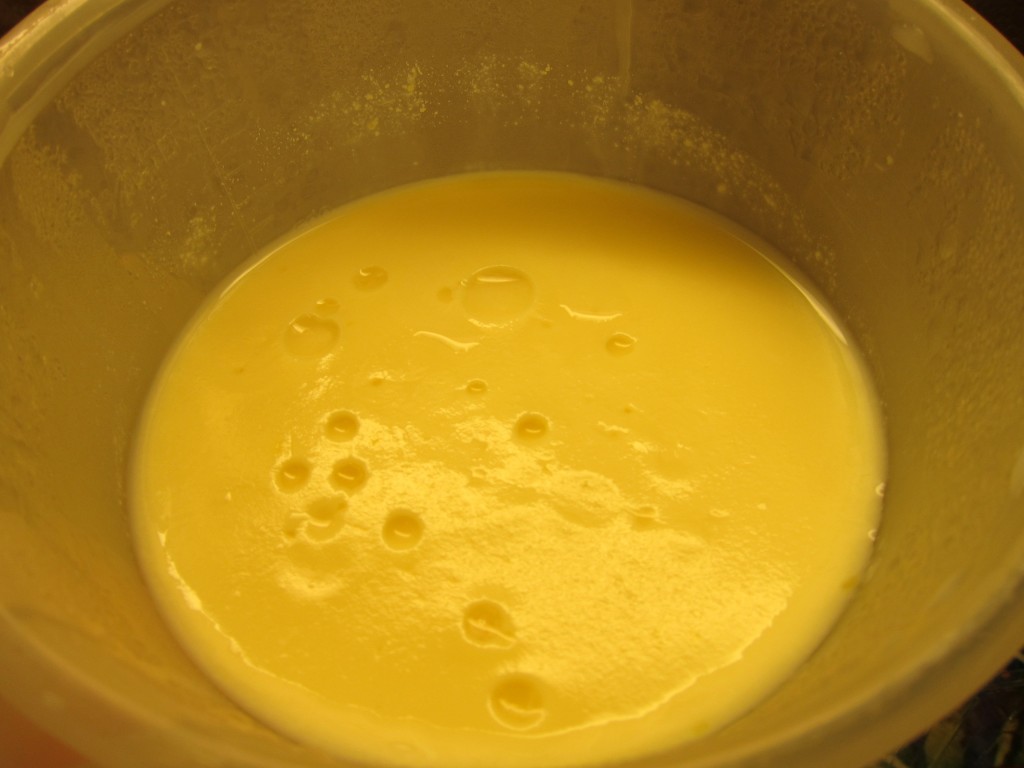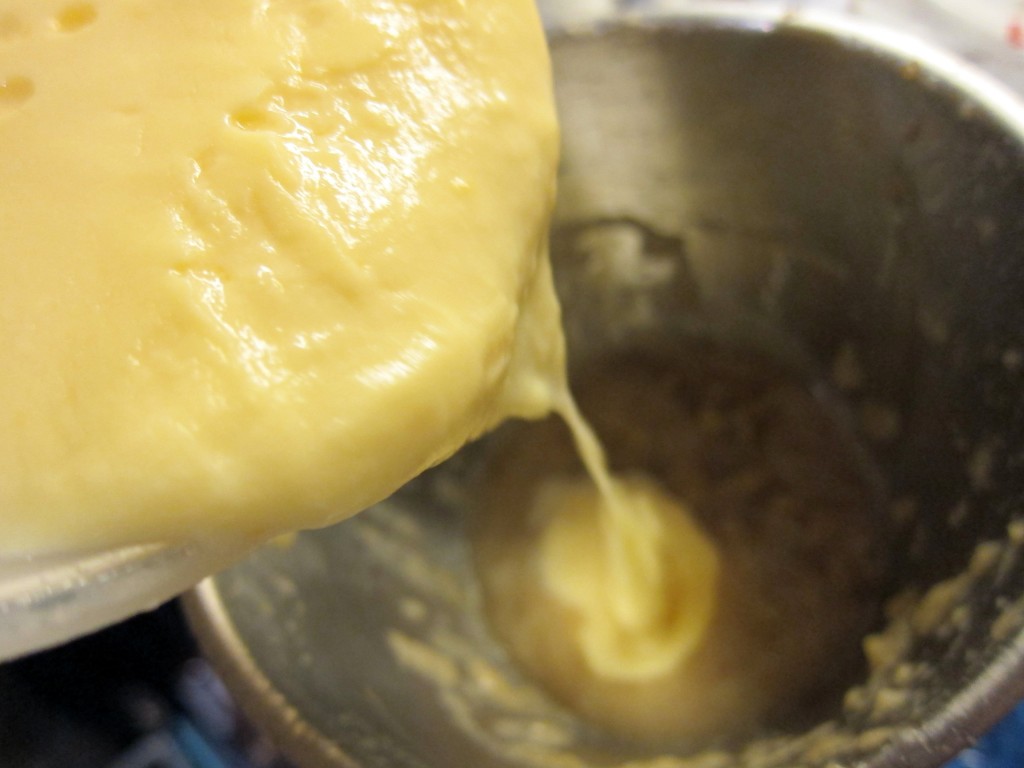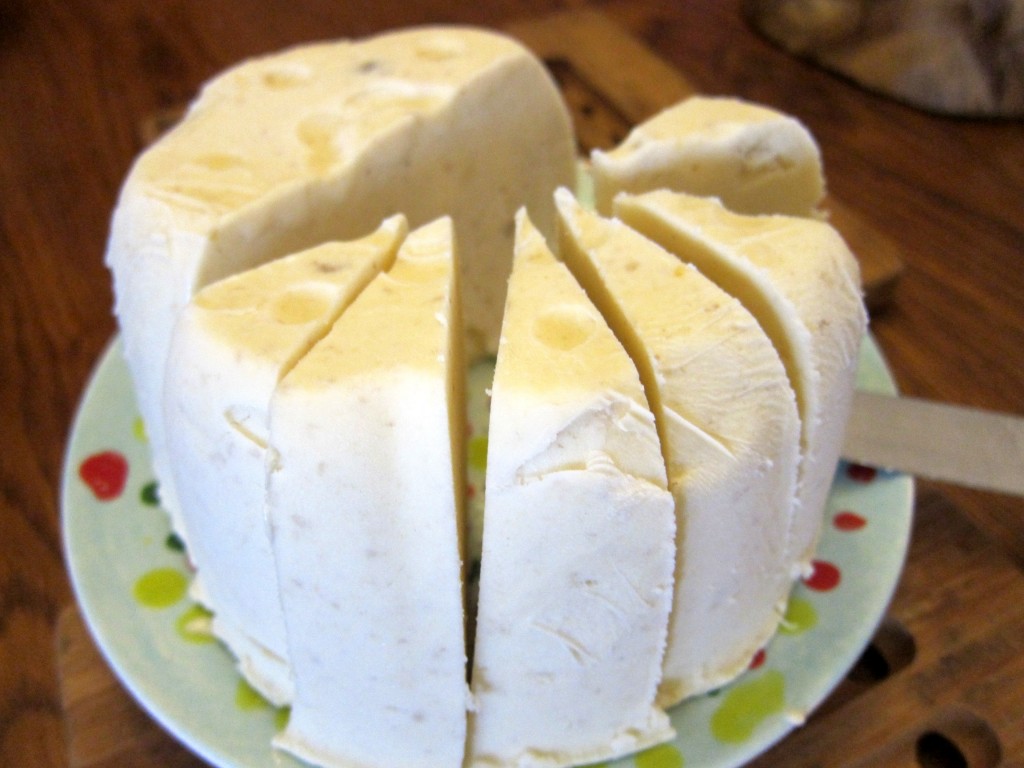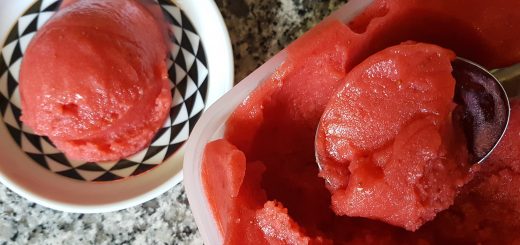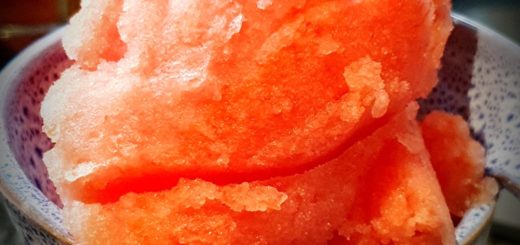Banana ice cream à la Monet
An ice cream recipe by a world famous French painter? Yes, actually! Let’s take a closer look at impressionist giant Claude Monet’s very own banana ice cream!
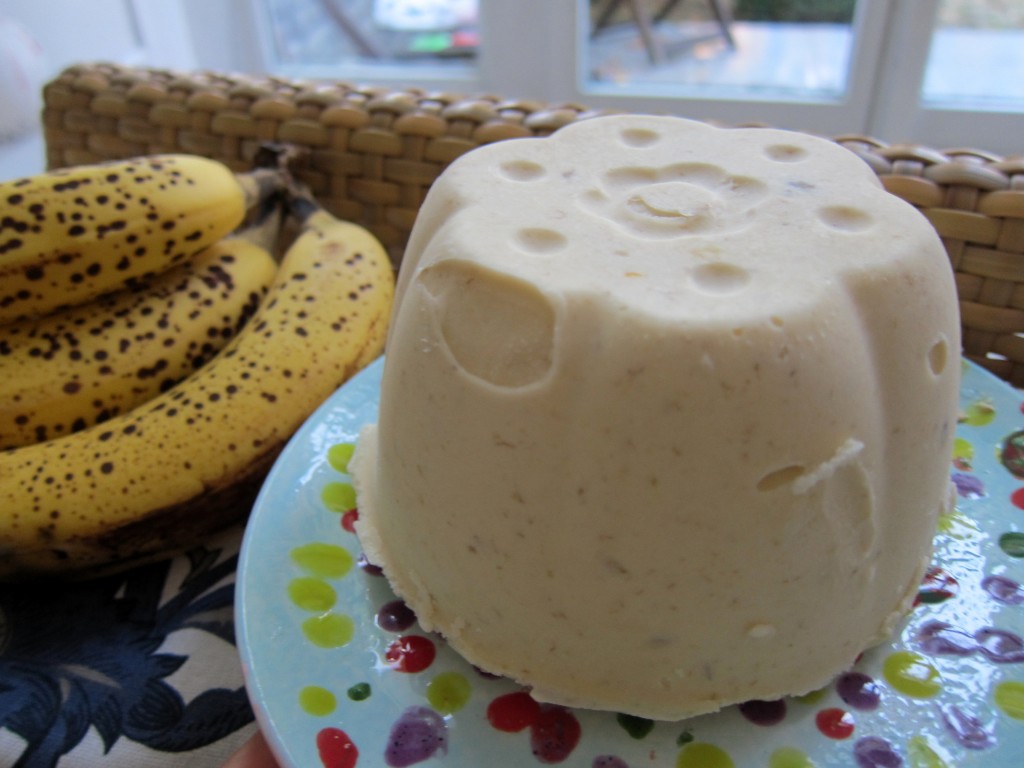
Monet liked to serve the Banana ice cream at Christmas time, but bananaholics could of course enjoy it at any time of the year
Impressionism in painting is characterised by an emphasis on … well, the impression objects around us make on the human eye, rather than the object per se.
Looking very closely at an impressionist painting, all you may see is – seemingly – a clutter of differently coloured daubs. Stepping back from the same painting a little, however, will suddenly make it all ‘come together’: Now, your eyes will see transient, vivid images of clouds, clothing which reflect in the sunlight, flowers on a meadow … just like in the painting below, for example. At the time, this –ism was a radical break from the older dominant styles in painting (where the faithful and ‘accurate’ depiction of things “as they are” was considered a necessity).
Impressionism set out to vitalise painting, not least by attempting to depict the fleeting sensation of time and the transient moment. And since ice cream also is a ‘transient’ dessert (in a melting sense 
Monet’s Banana ice cream
I found the recipe in the interesting book “Monet’s Table – the Cooking Journals of Claude Monet” by Claire Joyce, the wife of Madame Monet’s great-grandson.
As you will see, the recipe is custard based, using a handful of eggs. The proportions of milk/cream and sugar place the recipe closer to Italian style-custards than the typical French ones. But then, cream is not really required to keep this ice cream together: the bananas themselves will add structure (loaded with fibres and starch as they are), and the sugar content is also relatively high. And then, there is even a small amount of potato flour (= yet some more starch), which I believe mainly is there to bind some of the liquid, improving even more on the consistency.
The rest is simple – mash the bananas and pass the purée through a sieve. Then add the ‘refined’ purée to the cold custard and churn in your ice cream machine (or still-freeze in your freezer, using the method described in this post).
As mentioned, the custard base is prepared in the traditional manner: whisk the sugar and the egg yolks, then add – little by little, and while whisking -the steaming hot milk+cream. Continue to heat the custard base on low to medium heat (all the time whisking to avoid burnt results) until the base has reached the ‘nappe stage’: in more specific terms that translates into a temperature in the range of about 82-84º Celsius (180-183 ºF). If you have no thermometer, rely on your senses and the Spoon-test (the base should be ready when you will be able to draw a line that lasts on the back of a spoon coated by base. Take off from the heat and cool the base as quickly as you can. Once cool, transfer the base to the refrigerator and chill even further (preferably over night).
When the custard base has cooled/chilled down sufficiently, mix it with the banana purée. Whisk, then churn it all in your ice cream machine according to instructions.
If you have no ice cream machine, use your freezer and still-freeze it (see this post for useful advise on how to be best do that).
Make your ice cream a thing of beauty: Moulding!
While you certainly can skip this step and just pour your banana ice cream in a “normal” freezer safe container, it is fun and easy to do something slightly more elaborate. All you need is something that can act as a decorative mould for your ice cream. The one I used is a simple, inexpensive cake mould from IKEA. Fill it with ice cream (you may want to stop churning a little bit earlier than normal to easy the stuffing of the mould).
About 15 minutes before it is time to serve the ice cream, take out the mould from the freezer. Turn the mould upside down on a serving plate and you should be able to easily remove the mould when it is time. If you forget to take out the ice cream to soften and/or have difficulties getting the ice cream out of the mould, just heat the mould slightly under running warm water.
Monet apparently liked to serve this ice cream at Christmas time, often moulded in the shape of a sugar cone. And this is a really good banana ice cream! It has a solid, reassuring built and a very pronounced, strong banana flavour. Actually, it is probably the most “banana-tasting” banana ice cream that I have tested.
While this is all very well for all of us banana lovers, modern times may call for some more sophistication and contrast. So I would strongly suggest considering serving this worthy ice cream together with chocolate sauce, toffee sauce or something similar which you consider would complement the friendly banana flavour. Or serve it together with any other nice, contrasting ice cream.
- 500 ml (good 2 cups) milk
- 5 egg yolks
- 250 gram powdered sugar
- 150 ml (about 0,65 cup) cream
- 1 teaspoon potato flour
- pinch of salt
- 4 ripe, peeled bananas
- Bring the milk (and the pinch of salt) to the boil.
- In a bowl, mix together the egg yolks, the sugar and the potatoe flour. Stir with a wooden spoon until light and fluffy.
- Carefully and little by little, add the hot milk while whisking continuosly.
- Continue to cook until the ice cream base has thickened, making sure that the base does not boil [aim for the 'ideal' custard temperature of about 82-84º Celsius (180-183 ºF), even though Monet did not seem to use a thermometer
. In all cases, the custard base is ready with it passes the Spoon-test. Take off the heat and let cool down.
- Peel the bananas, mash and sieve them.
- Mix the banana purée with the cold custard and the cream. Whisk it all together, then churn in your ice cream machine.
- Once churned, the ice cream should still be soft enough to be put in a mould of your choice [or, if you'd rather skip moulds, just put it in a 'normal' freezer-safe container]. Fill the mould, then cover with plastic film and put in the freezer for the "final freezing touch".
- If this is the case, you should put the ice cream in the mould straight ahead, put it in the freezer and return about every 30 minutes or so to churn the ice cream manually (using, for instance, a fork). Continue until the ice cream has settled in a nice way (see the post on still-freezing for more details).
